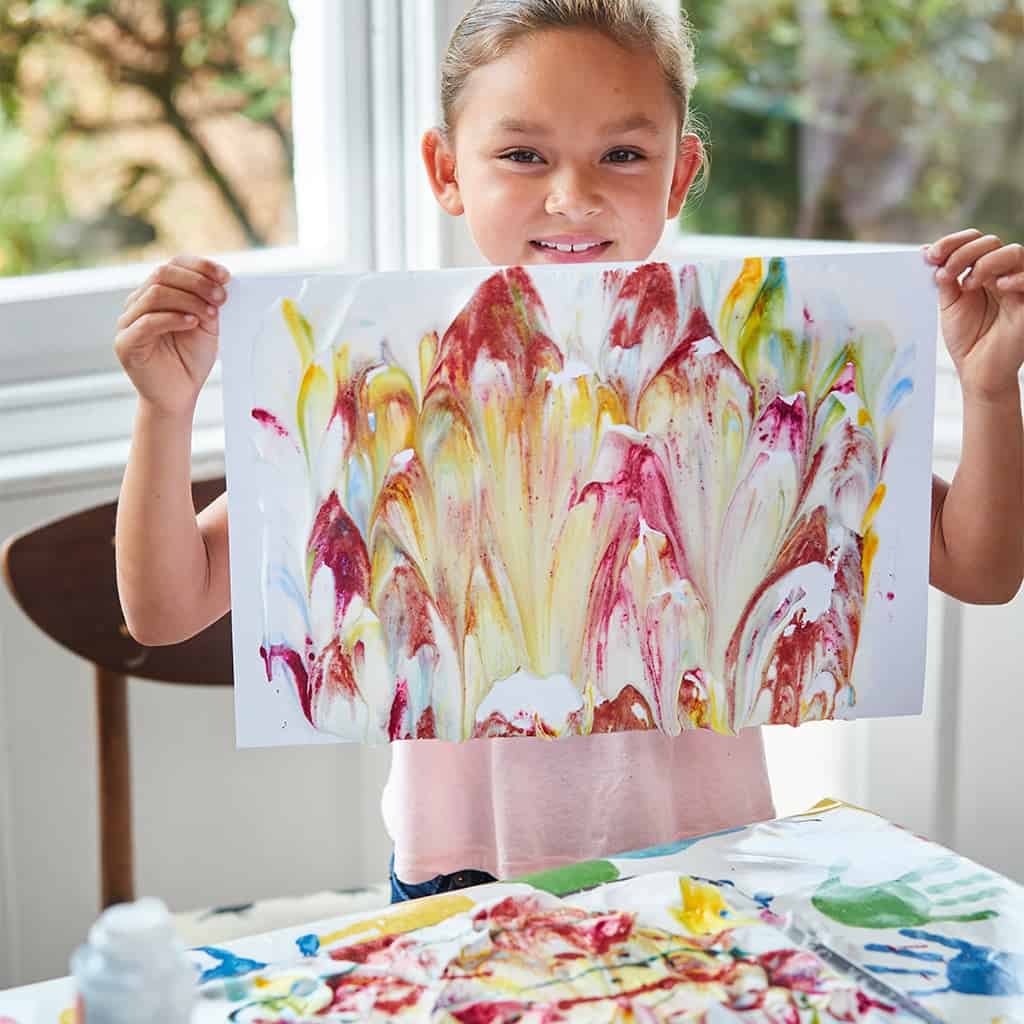Fun with Foam: A Shaving Cream Science Experiment for Kids!
Hey there, super parents! Are you on the hunt for a delightful activity to spark your child’s curiosity in science? Look no further, because the shaving foam experiment is here to color your day with educational fun! In this guide, we’ll walk you through an enchanting experiment that’s not only easy and safe but also bursting with opportunities to teach your little ones about chemistry and weather patterns. So, let’s get ready to make some fluffy clouds and rainbow rain!
What You’ll Need to Create Your Miniature Storm
Before we embark on our scientific journey, let’s gather the essentials. Here’s what you’ll need:
- A large, transparent glass or vase – to hold our scientific spectacle
- Regular shaving cream – our cloud substitute
- Food coloring – for the magical “rain”
- Water – to fill up our glass sky
- A pipette or dropper – for precision in our rainbow raindrops
Creating Cloudy Wonders: Step by Step
Now that we have our science kit ready, let’s create a beautiful storm in a glass!
- Fill the Glass: Start by filling the glass almost to the top with water. This water represents the atmosphere.
- Cloud Formation: Next, let’s add a thick layer of shaving foam on top of the water. This is our fluffy cloud, sitting high up in the “sky”.
- Adding Color: Choose the first color of food coloring you’d like to see rain down. Using the pipette, gently add several drops atop the cloud. Watch as they begin their journey through the foam!
The Whys and Hows of Your Home-Based Meteorology Lab
As those vibrant drops seep through the cloud and streak into the water below, you have the perfect moment to chat with your kids about what’s happening. This phenomenon is akin to how rain falls through clouds in the real world. The shaving cream represents the cloud, which holds onto water vapor. When it gets too heavy, it precipitates as “rain”. The droplets of food coloring simulating the fusion of water droplets within clouds, which eventually get heavy enough to fall as rain through the cloud. This simple experiment is a fantastic way to introduce the water cycle and the concept of saturation.
Ensuring a Safe and Happy Experiment
Before the fun begins, it’s crucial to keep safety in mind. Although our experiment seems almost too simple to warrant caution, here are a few tips to ensure everyone has a grand time:
- Make sure to use a space that’s okay to get a little messy – food coloring can stain!
- Always have an adult present to supervise the fun.
- While shaving foam is generally safe, it’s best to avoid contact with eyes and ingestion, so keep a watchful eye on younger children.
- Have paper towels or a cloth at hand for any accidental spills.
Taking Your Experiment to the Next Level
After mastering this basic understanding of cloud formation and rain, consider adding layers to the experiment. For instance, introducing temperature differences in the water or using multiple colors simultaneously can lead to more complex discussions on how various factors impact weather patterns. The sky is truly the limit when it comes to extending the learning!
We’ve embarked on a wonderful journey today, transforming your kitchen into a booming laboratory of learning and excitement with the shaving foam experiment. By now, your little ones should have a budding interest in science and a greater understanding of how clouds work. Stay tuned for more experiments that you can try at home to keep the discoveries coming and the inspiration flowing. Science is an ongoing adventure, and together, there’s no telling how many mysteries you and your family can unravel!

5 Things Parents Should Know Before Starting the Shaving Foam Experiment
It’s always exciting to dive into a new activity with your kids, but a touch of preparation can ensure everything goes smoothly. Here are five useful tips to consider before starting the shaving foam experiment:
- Understand the Basics: Have a quick read-up on the science behind clouds and rain. This will help you explain the concepts to your children in a fun and age-appropriate way as you conduct the experiment.
- Choose the Right Space: Kitchen counters or tables with a hard surface are ideal for easy clean-up. Avoid areas with carpets or delicate furniture to minimize the aftermath of potential spills.
- Prepare for Questions: Curious minds may have a barrage of questions. Be ready to engage and guide their inquisitiveness. If you don’t know an answer, take it as an opportunity to explore and learn together.
- Accessibility of Materials: Make sure all materials are easily accessible and child-friendly. You want to avoid any last-minute rushes to find a dropper or the right kind of shaving cream amidst the excitement.
- Embrace the Mess: Accept that experiments can get a little messy and that it’s all part of the learning process. Dress accordingly and maybe have an apron or lab coat for your little scientist to make them feel like a true expert.
More Ways to Play and Learn
Once your family has successfully created a colorful storm in a glass, don’t let the inquiry end there. Here are some extra ideas to expand the experiment:
- Experiment with different amounts of shaving cream and discuss how the thickness of the cloud might affect rain.
- Use a variety of liquids with different densities, like honey or oil, to see how they interact with the “cloud”.
- Create a hypothesis on what might happen if you add salt or another soluble substance to the cloud and test it out.
- Illustrate the difference between light and heavy precipitation by controlling the amount of food coloring added.
Expand Your Knowledge with Additional Resources
For those keen on diving deeper into the science of weather and experiments at home, here are some resources:
- Explore online videos and documentaries about the water cycle and cloud formations for a visual supplement to the experiment.
- Visit your local library or bookstore for children’s books on weather science and interactive science workbooks.
- Science museums and centers often have weather-related exhibits – a field trip could reinforce what has been learned at home.
- Check out educational websites that offer kits and materials for more advanced weather experiments for kids.
From Experiment to Everyday Observations
Take the learning beyond the experiment by encouraging your kids to observe weather patterns in real life. Monitor the clouds on family walks, discuss how weather forecasts are made, and maybe even make a homemade barometer or weather station. These ongoing activities will help cement the concepts they’ve learned and showcase the wonders of the natural world happening right overhead.
Document the Adventure: Encourage Journaling
After completing the shaving foam experiment, give your children a journal to record what they observed, learned, and wondered. This practice can boost their observation skills, reinforce their learning, and provide a precious keepsake of their scientific explorations.
See more great Things to Do with Kids in New Zealand here. For more information see here
Disclaimer
The articles available via our website provide general information only and we strongly urge readers to exercise caution and conduct their own thorough research and fact-checking. The information presented should not be taken as absolute truth, and, to the maximum extent permitted by law, we will not be held liable for any inaccuracies or errors in the content. It is essential for individuals to independently verify and validate the information before making any decisions or taking any actions based on the articles.




